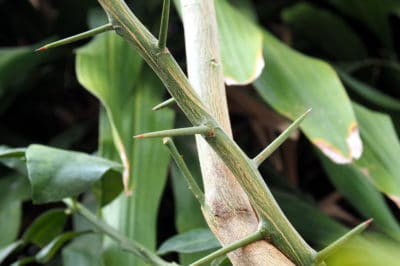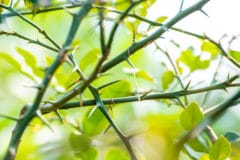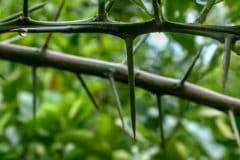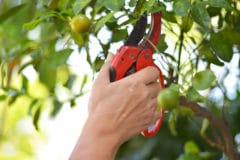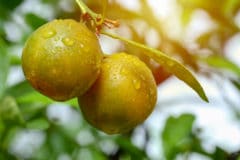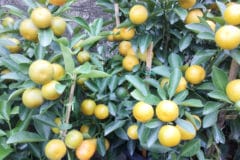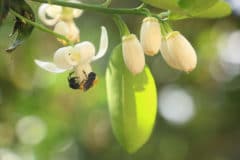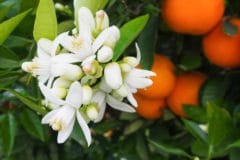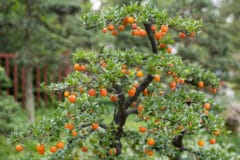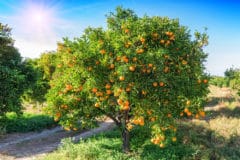What Exactly Are Thorns?
Most of us associate thorns with roses, not orange trees. But the botanical reality is that rose bushes have prickles, tiny spines that sprout from their stem tissue. An orange tree’s thorns are highly modified twigs. They simply taper to points instead of continuing to branch out.
Individual thorns emerge from the same leaf axils where the flower buds form. The tree’s vascular system nourishes thorns just like the rest of its living tissues, because they have a job to do.
Why Do Orange Trees Need Thorns?
Mother Nature has equipped orange trees with thorns to protect them from hungry predators. Any leaf-munching animal is likely to turn down a second helping after biting into a tree that bites back.
And, because the leaf eaters usually prefer the tender leaves of young, small orange trees, thorn production gradually decreases as the trees get older, bigger and stronger.
Why Thornless Orange Cultivars Sometime Sprout Thorns
Commercial growers have gone to great lengths to develop thornless sweet orange cultivars, including:
- ‘Delta’ Valencia oranges
- ‘Atwood’ navel oranges
- ‘Moro’ and ‘Sanguinello’ blood oranges
Like all sweet oranges, thornless cultivars are reliably hardy in USDA plant hardiness zones 9 through 11. But many growers improve their cold tolerance by budding them on to the rootstock of trifoliate oranges (Citrus trifoliata), extremely thorny trees hardy to USDA zone 6.
Oranges budded onto this rootstock often develop thorny branches. They’re also prone to having trifoliate orange suckers sprout around their roots. Unless removed, the suckers form an impenetrable thicket that robs the budded tree of its water and soil nutrients.
Removing Orange Tree Thorns
While removing its suckers is essential to your orange tree’s health, removing its thorns is optional. Most trees simply outgrow them, but if yours hasn’t and they’re interfering with its care or harvesting, prune away!
Except for the chance of getting jabbed, it’s no different from pruning any unwanted branches. Just wear heavy duty garden gloves (preferably forearm length). And place a tarp under the tree to catch the fallen thorns for easy, jab-free disposal.
